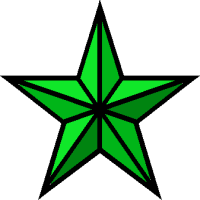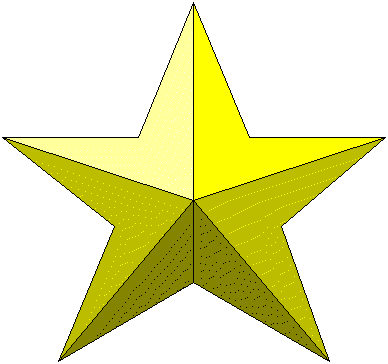|
(2017
midterm assignment) Sample Student Midterm Answers 2017 (index to #2 samples) #2a: Short Essay (Favorite Passage) |
 |
Cynthia Cleveland
October 25 2017
John Smith, Romantic Hero
[para. 6] But
seeing by trade and courtesy there was nothing to be had, he made bold to try
such conclusions as necessity enforced, though contrary to his commission. [He]
let fly his muskets, ran his boat on shore, whereat they all fled into the
woods. So marching towards their houses, they might see great heaps of corn:
much ado he had to restrain his hungry soldiers from present [immediate] taking
of it, expecting as it happened that the savages would assault them; as not
long after they did with a most hideous noise. Sixty or seventy of them, some
black, some red, some white, some parti-colored came in a square order, singing
and dancing out of the woods, with their Okee (which was an idol made of skins,
stuffed with moss, all painted and hung with chains and copper) borne before
them. And in this manner, being well armed with clubs, targets, bows and
arrows, they charged the English, that so kindly received them with their muskets
loaden with pistol shot, that down fell their god and divers lay on the ground.
The rest fled again to the woods and ere long sent one of the Quiyoughkasoucks
to offer peace and redeem their Okee. Smith told them if only six of them would
come unarmed and load his boat, he would not only be their friend, but restore
them their Okee, and give them beads, copper, and hatchets besides: which on
both sides was to their contents performed: and then they brought him venison,
turkeys, wild fowl, bread, and what they had, singing and dancing in sign of
friendship till they departed. . . .
The
most compelling subject matter during the course was that of the romance
narrative. During the course of our discussions we have come to understand the
romance narrative as the journey of a hero, through a series of trials and
tribulations to overcome. Whether that hero should overcome an over-zealous
villain or the hardships of nature is a matter of the discourse. The text that
perfectly displays this romantic narrative is that of John Smith’s account of
his days in North America. His narrative insists that he overcomes the
resistance to the natives and survives of his own skill and ultimately ushers
the survival of his company.
What
is most interesting about this narrative is his choice to write in third person,
which lends a bit more agency to the concept of the romantic narrative—that is,
he writes of his own adventures while appearing to remain objective to further
elevate this narrative to romance status. It has the effect of separating the
author from the hero, in this context, and gives it an almost fictional quality.
In this way, he is able to effectively place himself in the context of the hero
and the natives as his opposition, in which we should be inclined to view Smith
as the protagonist and the natives, the antagonists.
In
this passage, we can see John Smith, our self-designed hero, has come upon
supplies, but restricts his fellow company from stealing it from those it
belongs to—an innately heroic quality, engaging his moral compass. Inevitably,
our hero is met with conflict, the natives fall on his company, but our hero
prevails. His superior weaponry wins the day for himself and his company, and
there’s even a happily-ever-after quality to this passage, in which, after the
defeat, Smith is able to befriend the natives. All is well, they parts ways,
literally singing and dancing.
A
major issue concerning the context of this narrative is the glorification of
dominating the Native Americans in their own territory by force. In reality,
John Smith and his company wandered into their neighborhood and were
understandably confronted by the locals, but his narrative seems to undercut
that particular aspect, in favor of his own self-interest.
The reality is, that John Smith’s narrative seeks to dismiss his actions
as justified, since he needed something, he took it. What’s problematic
concerning this narrative is the lack of consideration for those that Smith
would consider to be his enemies, and his depiction of himself as a romantic
figure—or a savior of sorts. It’s a view that’s commonly associated with figures
of the New World, that the Native Americans are continuously portrayed as the
opposing force, when in reality, from the perspective of the natives—the
converse would be true.



